Yukikaki Research Station
Interactive Installation
The “Yukikaki Research Station” repurposes snow shovels (Japanese: “Yukikaki”) and other snow related gear as experimental wind turbines. The installation records the rotation speed of each of its three turbines. Visitors can access the research data in realtime via their smartphones. Thus, everyone can take part in the ongoing investigation for an unknown future, where every resourceful, creative act counts.
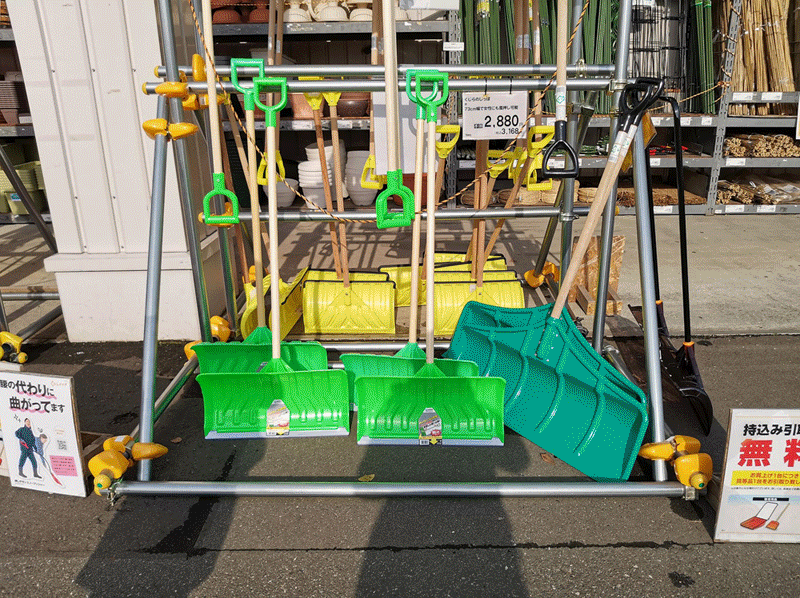
Kati and I made the installation during a research residency in Sapporo, in February 2020. It was meant to be exhibited at the Sapporo Art Park, as part of the Sapporo International Art Festival (SIAF2020).
Due to the ongoing corona pandemic, those plans have been canceled. The installation is now being presented online on SIAF's website and also on a virtual tour called SIAF2020Matrix, which is really worth to visit.
Background
Sapporo is well known for amazing winters and the annual Snow Festival. Therefore, our plan was to work on an outdoor installation, where snow and ice would play a central role. The theme of SIAF2020, “Of Roots and Clouds”, also served as our inspiration.
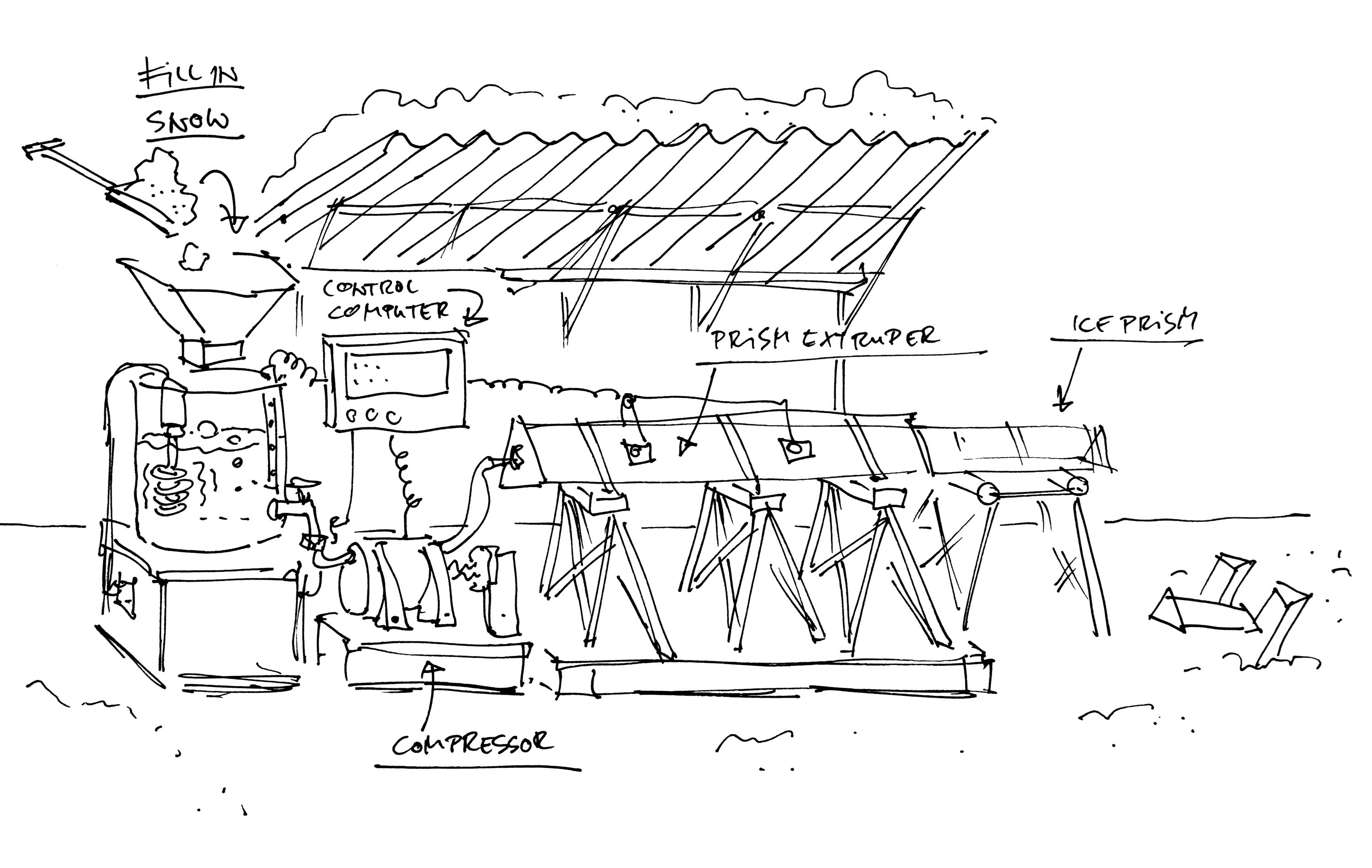
However, when we arrived in Sapporo at the end of January, there was hardly any snow. In our home countries, Germany and Finland, and in many other places in the northern hemisphere, the situation was similar. Thus, we changed our installation concept and reacted to the current situation.
That's nice :)
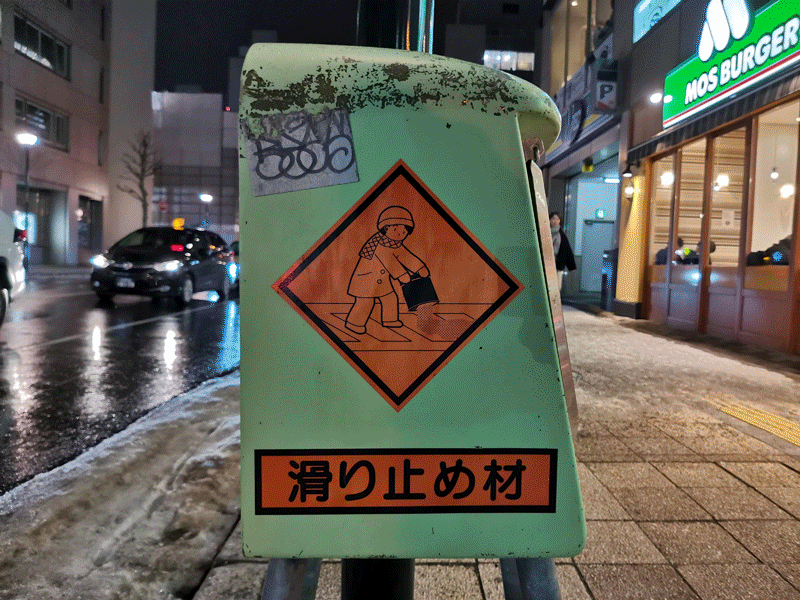
Due to the usually very high snowfall in Sapporo during the winter season, people living in the city are used to engaging in various forms of yukikaki (which also means the act of snow shoveling). When we explored materials at the local hardware stores, we discovered an impressive array of colorful yukikakis and other specialized snow equipment. Later on, it started to snow properly and we also witnessed how all these items were used in daily life as a necessity to cope with large amounts of snow. But what would happen to all this equipment in the future, when there is most likely less snow?
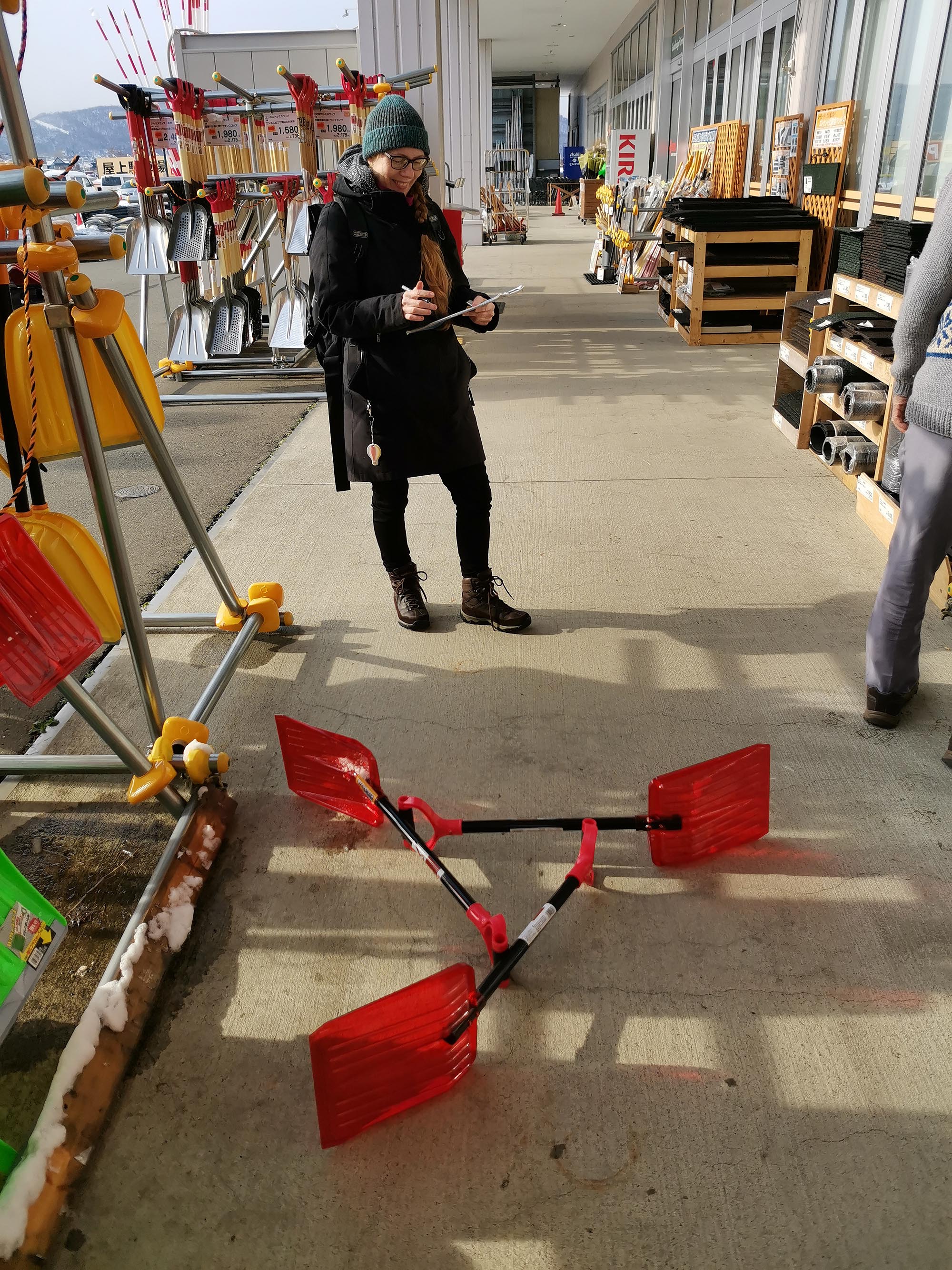
This is how we came up with the Yukikaki Research Station. It explores how well yukikakis of different shapes can be repurposed as makeshift wind turbines by measuring their rotation speed via magnetic sensors. A microcontroller stores the values over time, allowing the audience to view the data through a mobile interface. In the video on the top of this page, you can see the Yukikaki Research Station inside the Tenjinyama Art Studio, where we built it, although it was naturally planned to be exhibited eventually outside.
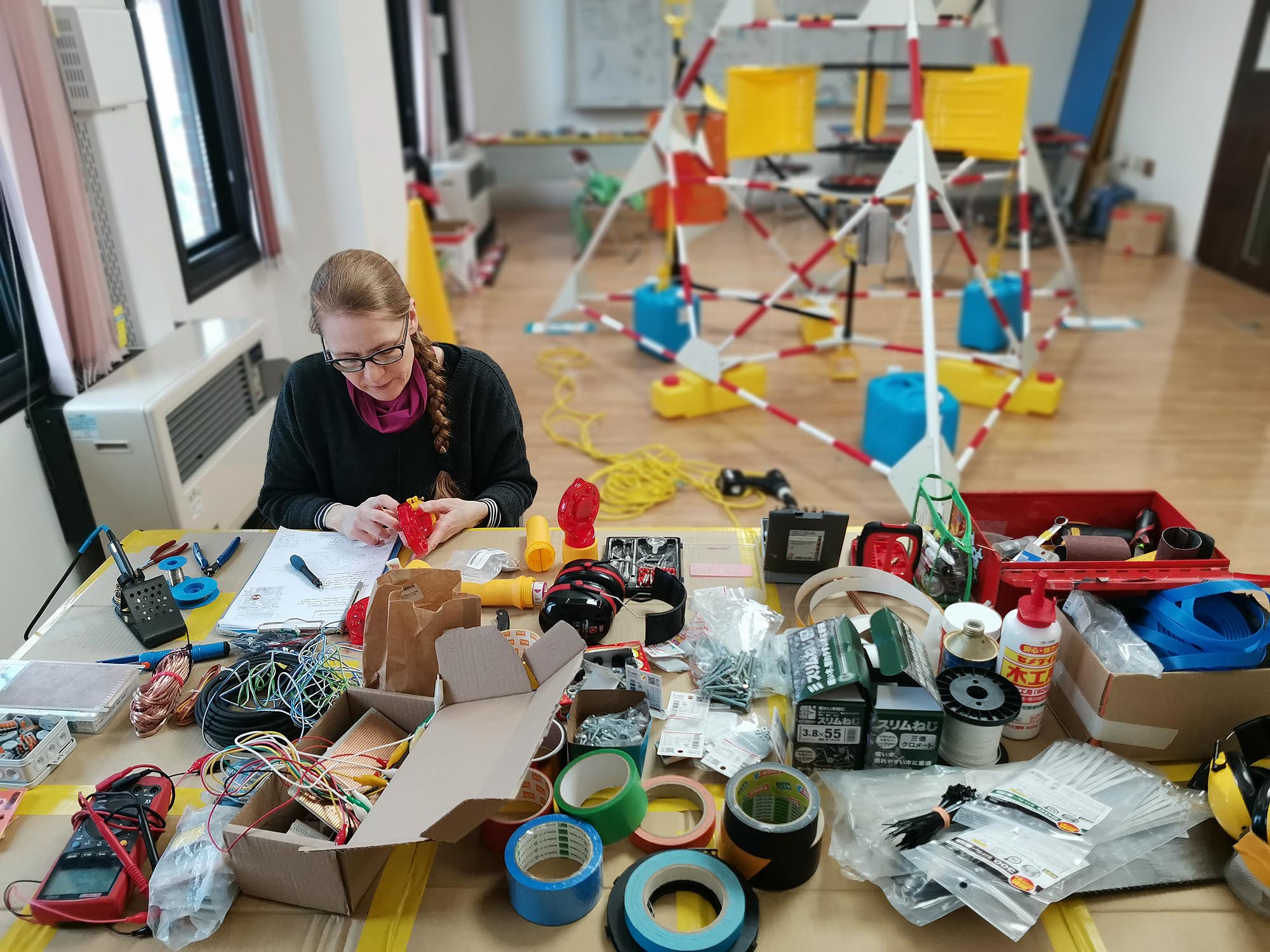
Like so many other cultural events, SIAF2020 was cancelled due to the impact of the corona virus pandemic. For this reason we don't have documentation of the Yukikaki Research Station at its planned location in the Sapporo Art Park. But we hope to return to Sapporo one day and to finally show the installation outside, in winter, at the park.
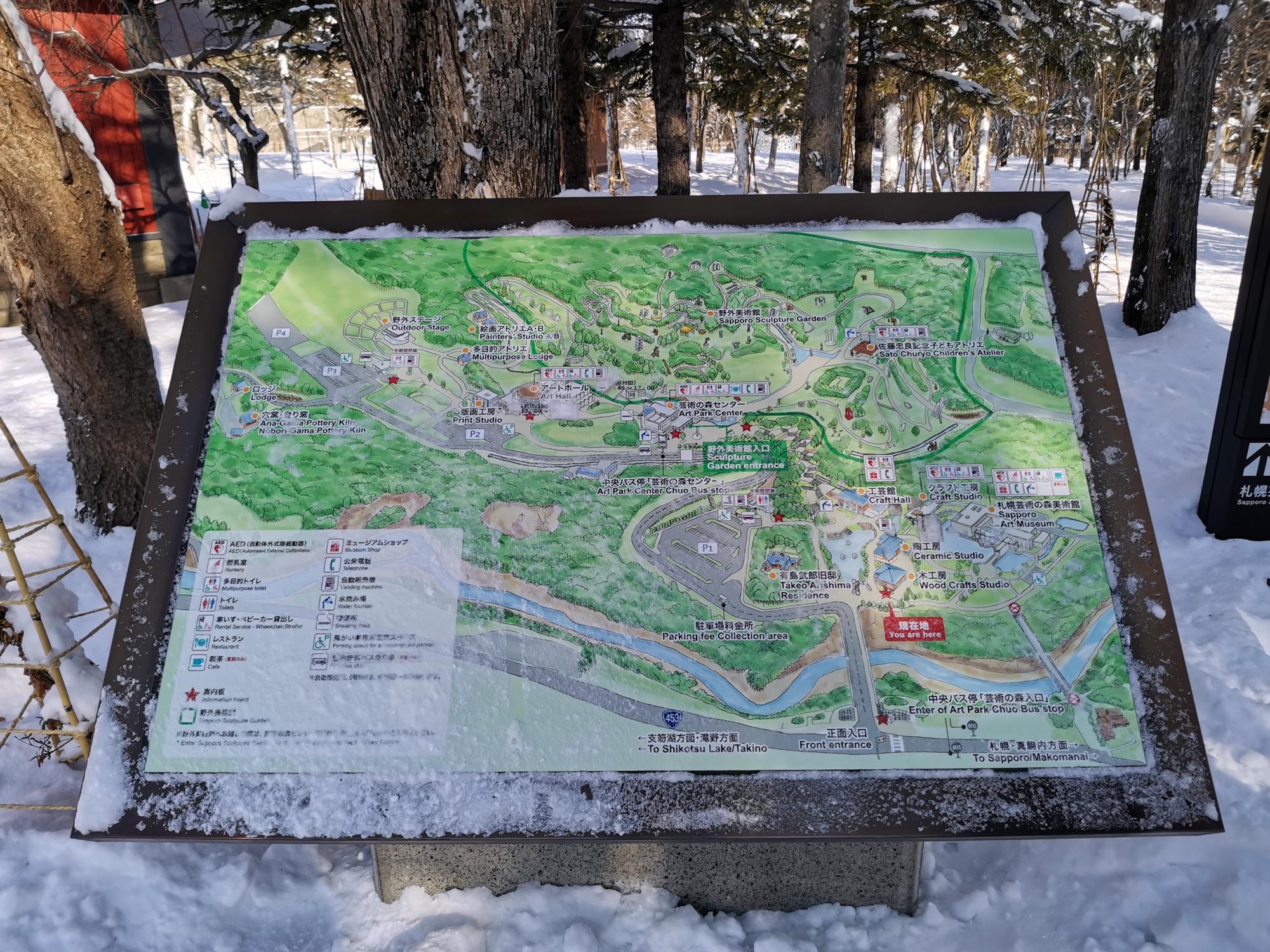
Technical description
Mechanical structure
Our aim was to built the installation out of snow-related gear. Because of our concept, but also because it is weatherproof and affordable material. For the main structure, we used wooden and metal “marker poles”, which are colored with red and white stripes. The poles are connected with triangular Dibond pieces (a sandwich material, consisting of plastic on the inside and aluminum on the outside). Those pieces were all cut with a pink electric jigsaw. Further connection materials include snow shovel sticks and coated plywood. All the parts were screwed together, as the whole machine had to be disassembled at the end, in order to get it out of the studio's doors.
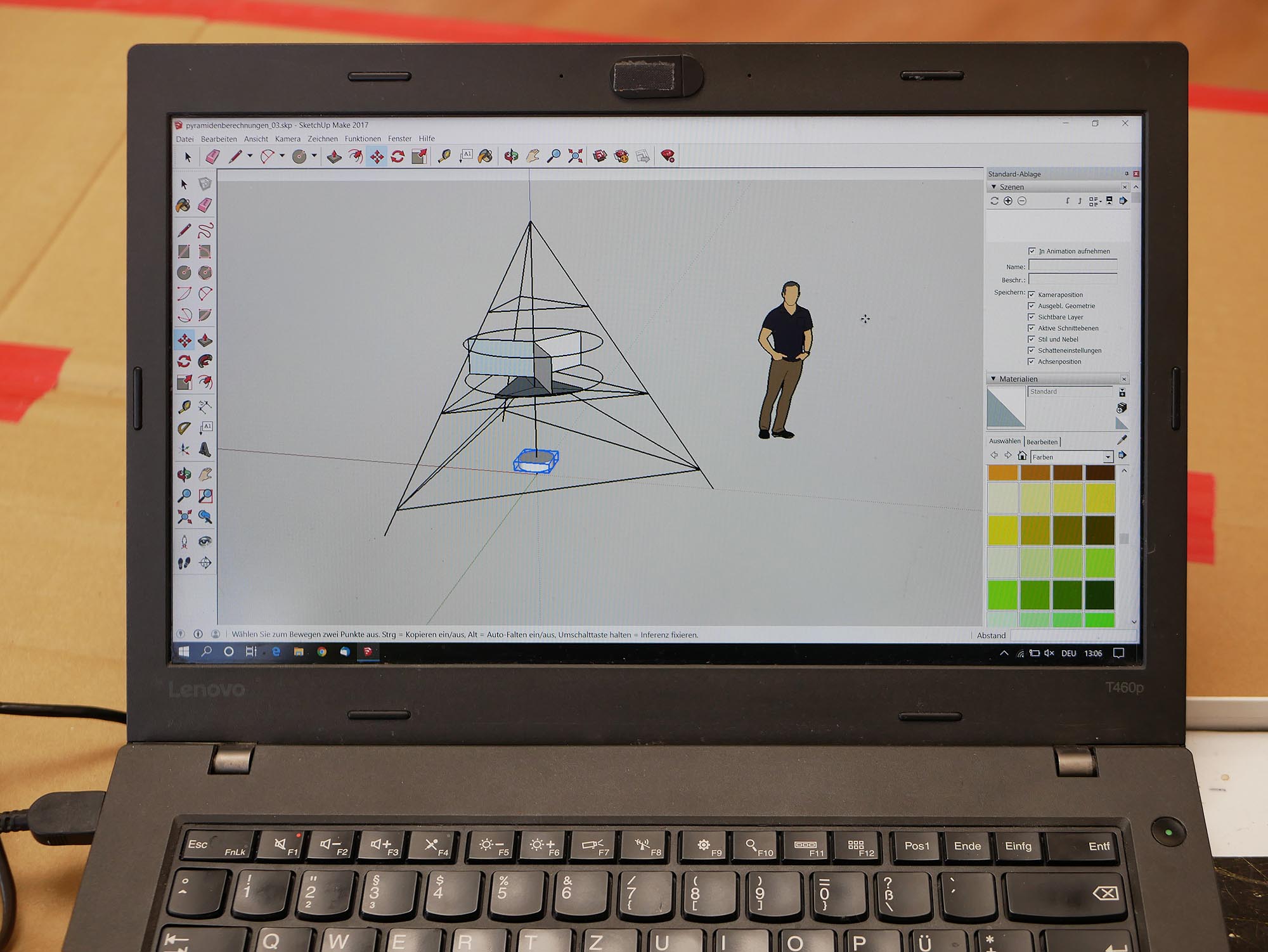
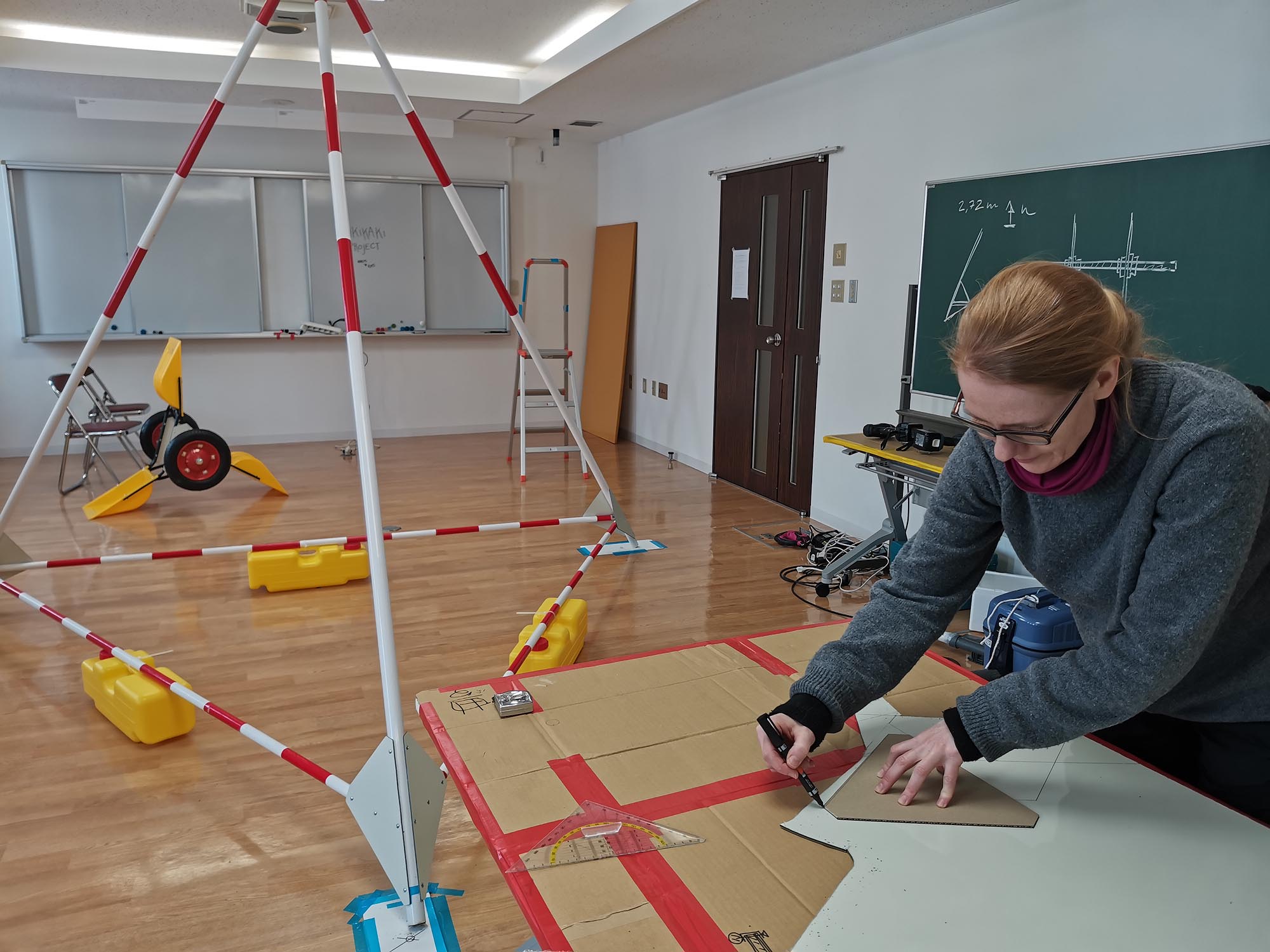
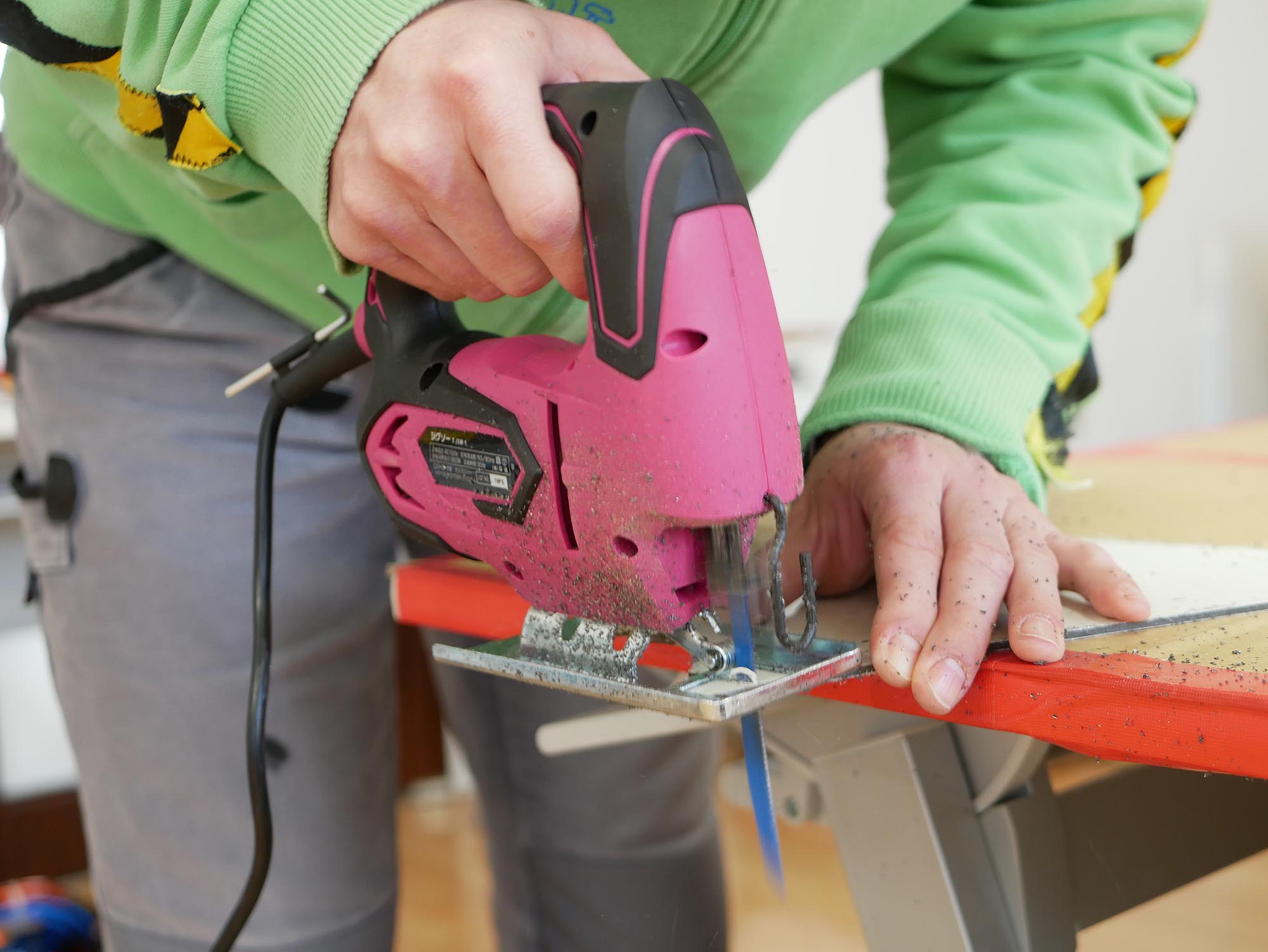
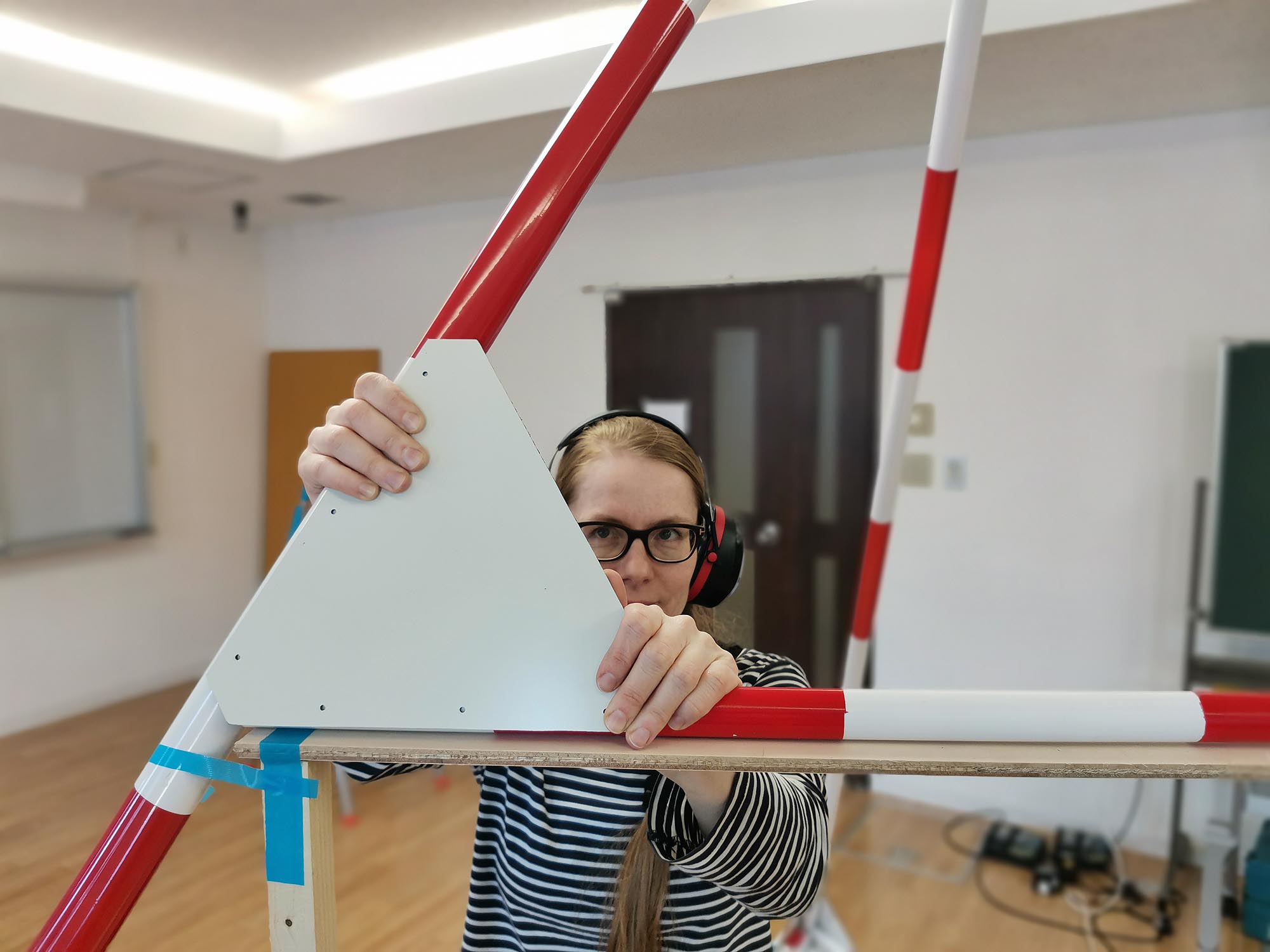
The turbines were mounted on threaded rods and spin inside ball bearings. At the bottom, the installation is held in place by plastic canisters, which are filled with sand. The installation is surrounded by yellow traffic cones, which are connected by black and yellow striped plastic pipes. These are meant as protection, so that for example visiting kids aren't tempted to climb onto the installation.
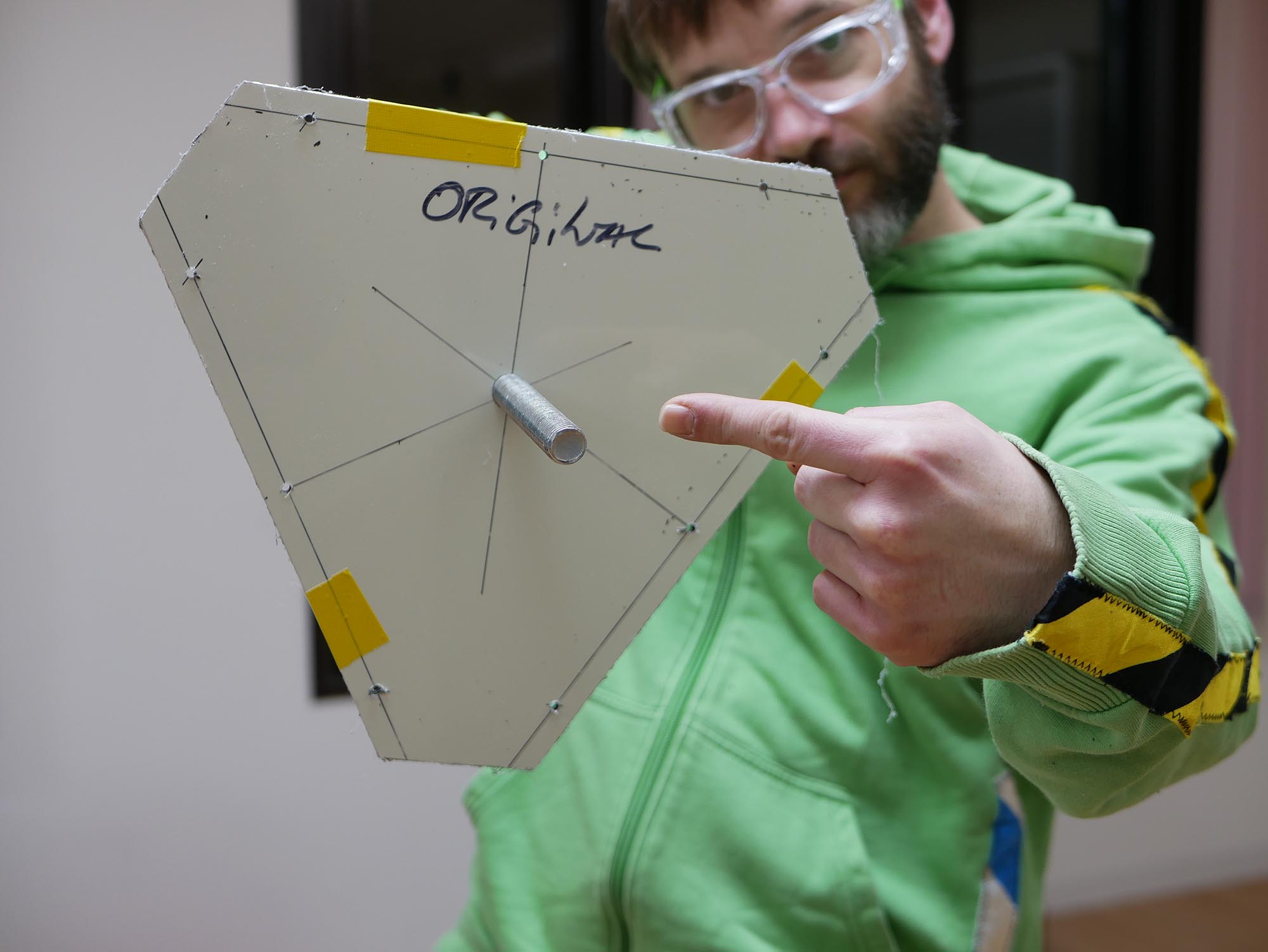
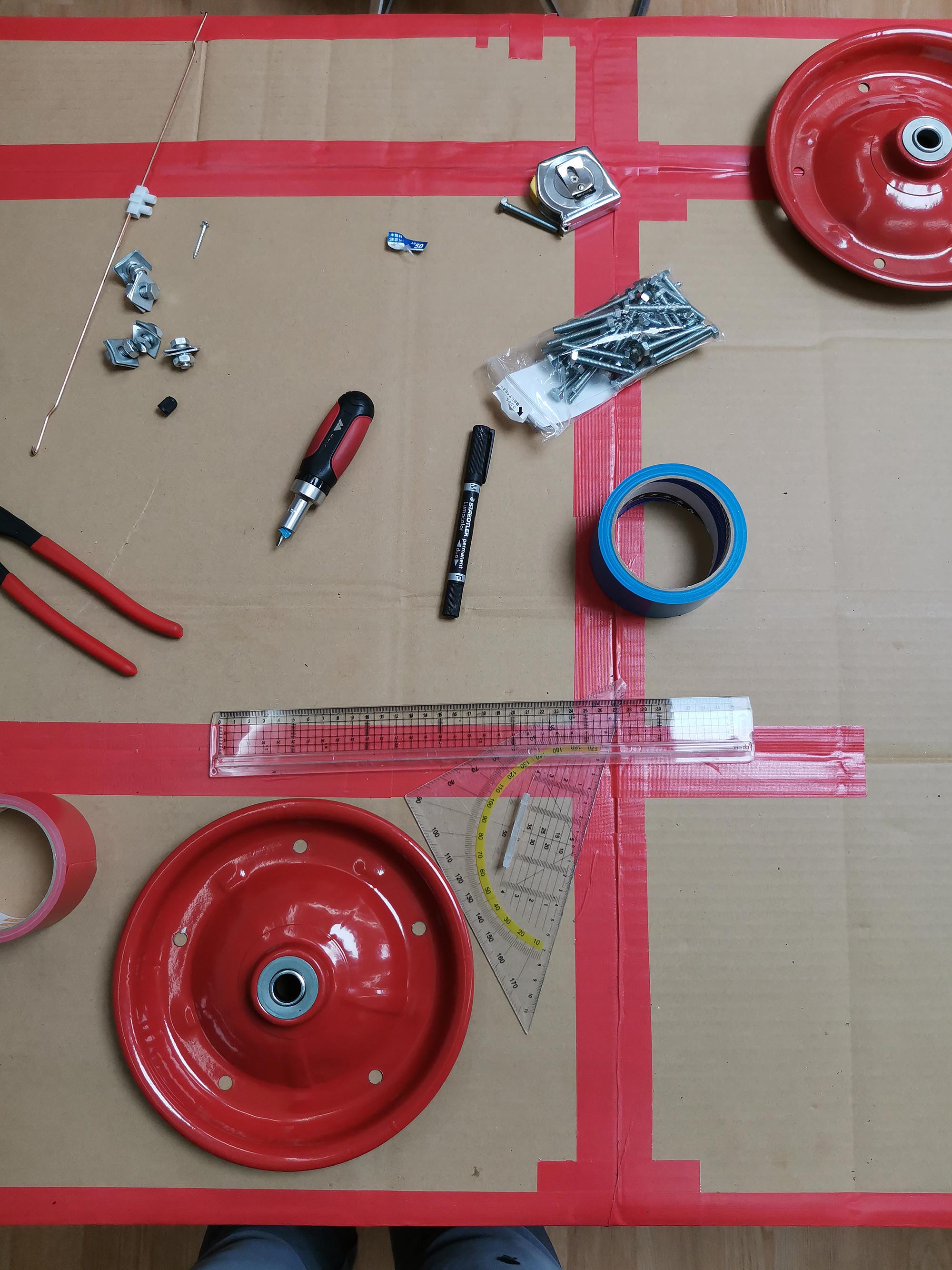
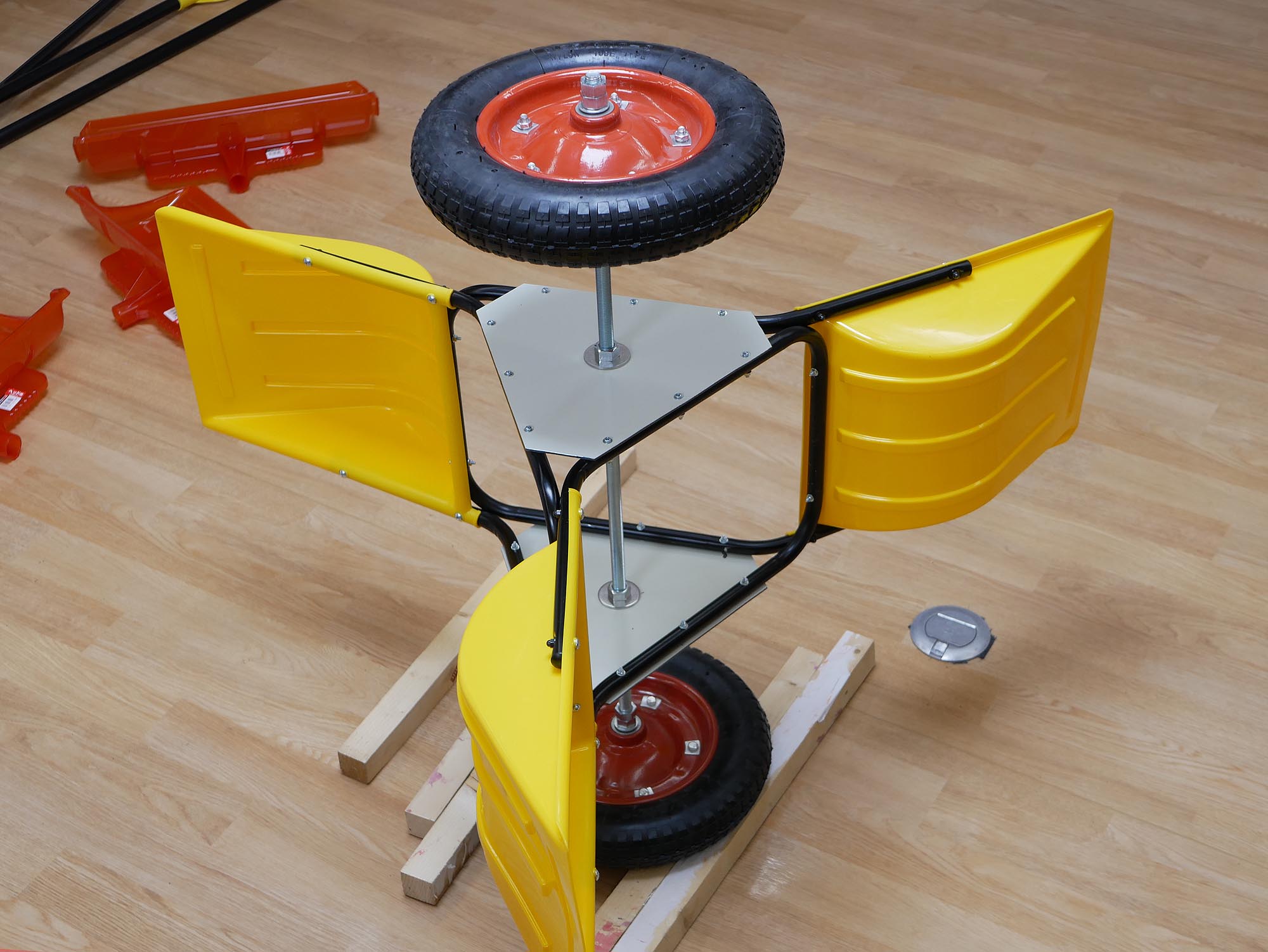
Electronics & Software
The installation is powered by a 5V power supply, which is connected via an extension cord to a mains outlet. The circuit board contains a microcontroller circuit and hacked blinking warning lamps. The controller is an ESP8266 on a NodeMCU 1.0 development board.
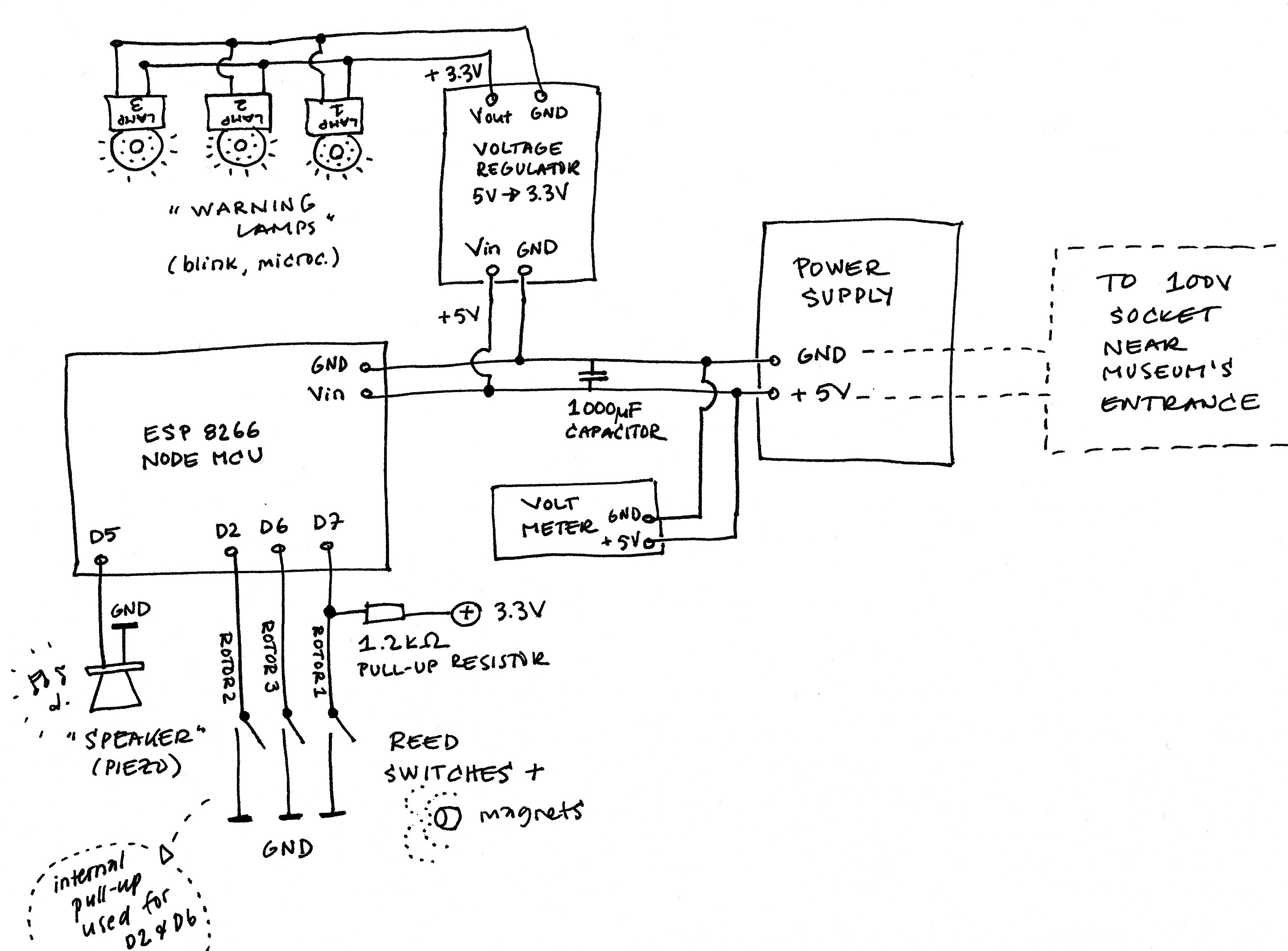
The microcontroller continuously monitors the rotation of the three wind turbines. This works via reed switches, which close in the presence of a magnetic field. Each wind turbine has a small neodymium magnet attached to them. With each turbine rotation, the magnet passes a reed switch. This provides a signal pulse for the microcontroller.
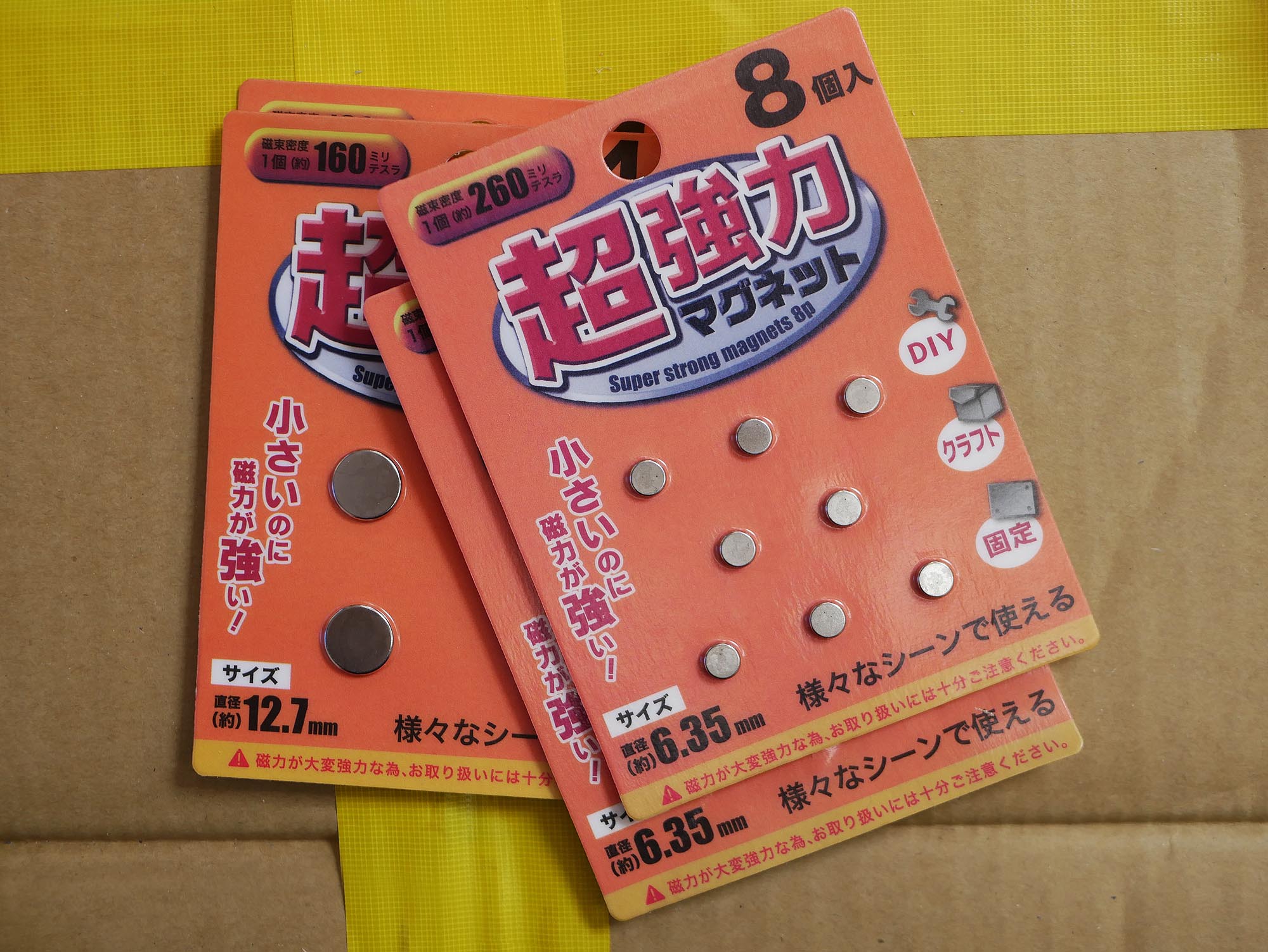
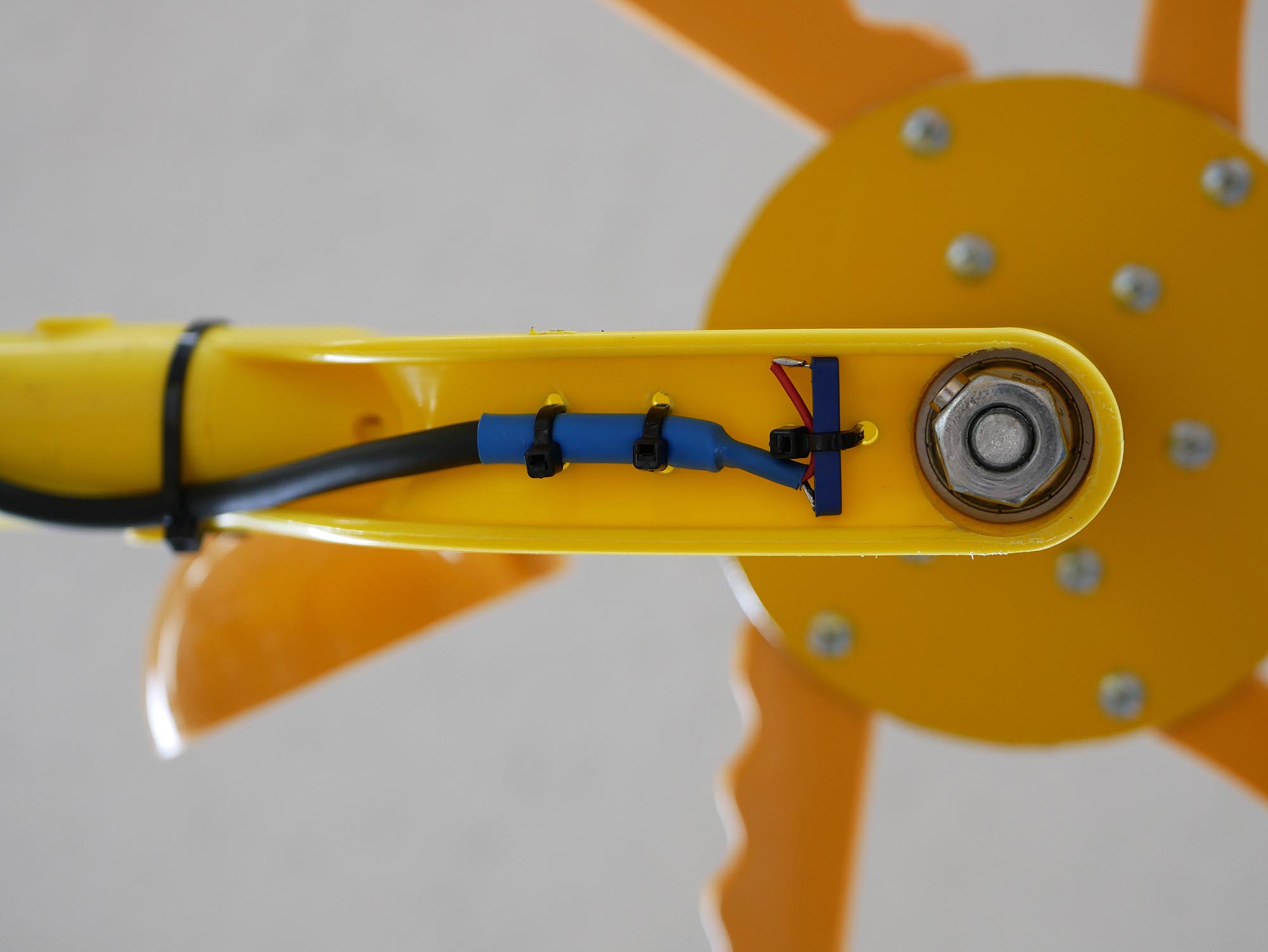
Based on the switch pulses, the controller calculates the rotations per minute of each turbine. The controller stores the rotation speed data of each turbine in its internal memory for the last 12 hours. The microcontroller also provides a WiFi access point through which visitors can obtain information on the wind turbines' operation.
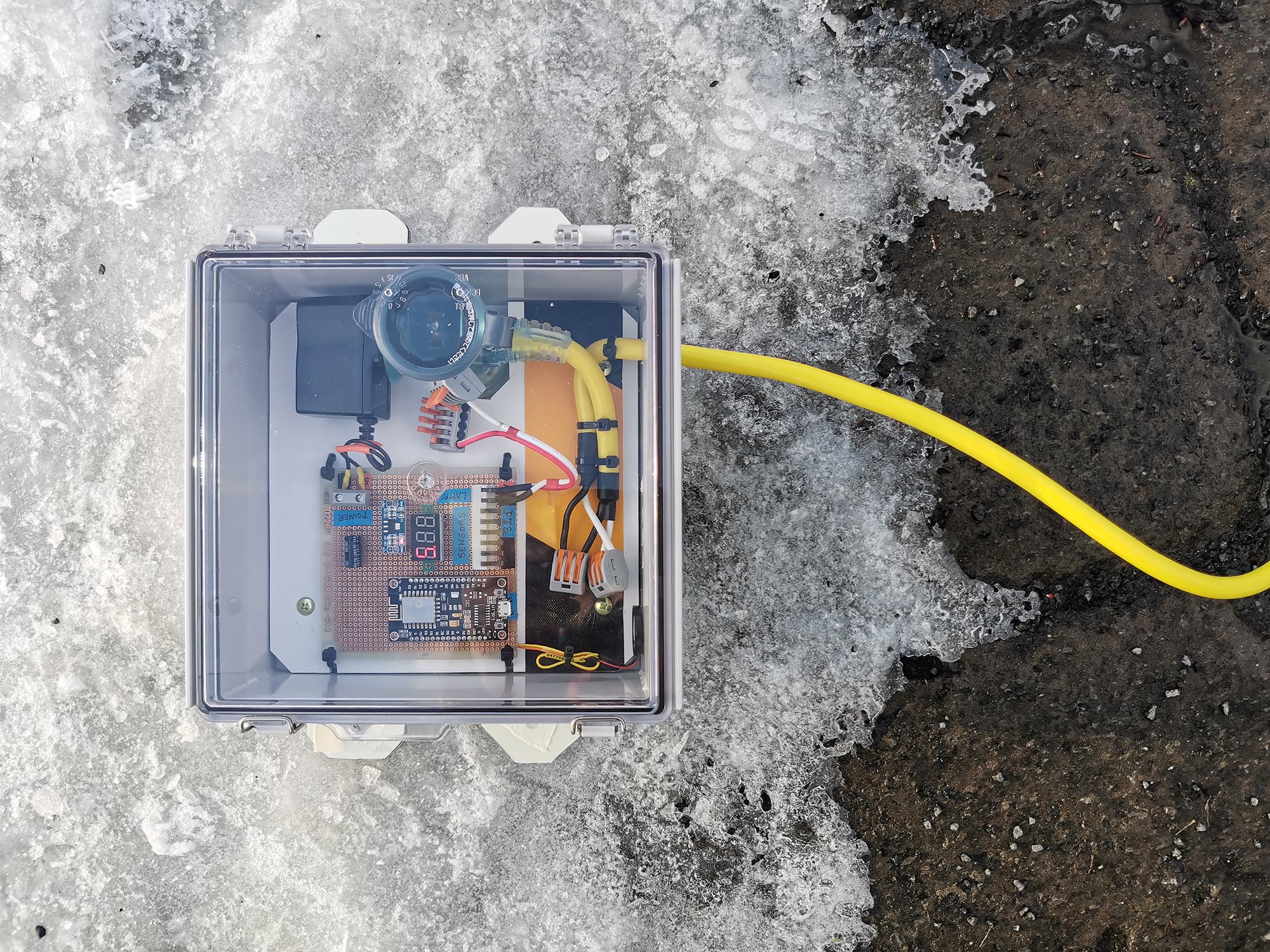
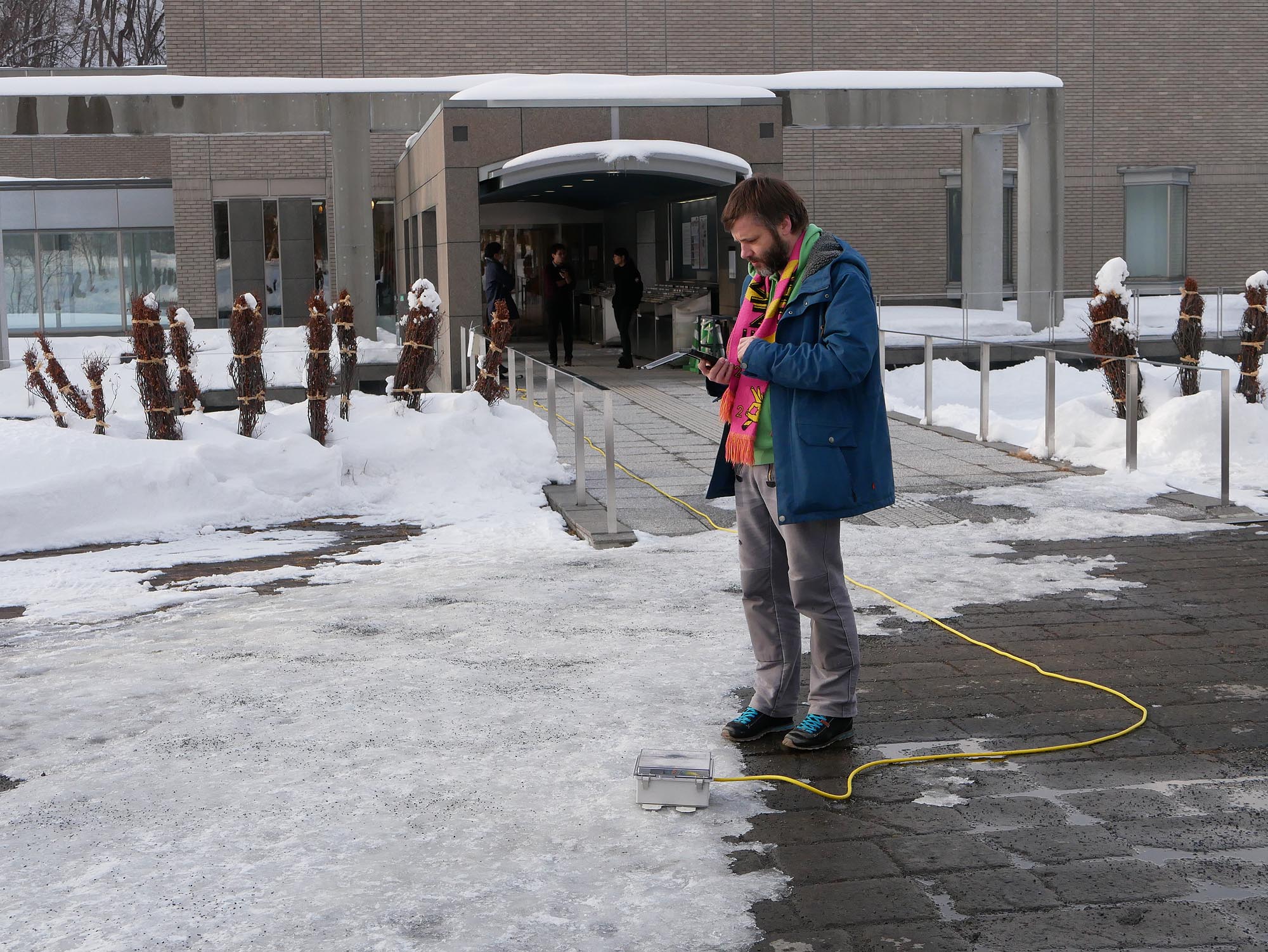
The data shown here is a simulation

Software
The ESP8266 is programmed via the Arduino IDE. The code can be downloaded here. It uses the “ESP8266WiFi” and “WiFiClient” libraries in order to provide a WiFi access point. The “ESP8266WebServer” library is used to provide an HTML website via this access point. This HTML document includes a dynamically generated SVG image that displays the turbines' RPM data.
Conclusion
This is installation is just a tiny first step in the novel field of yukikaki repurpose research. Allthough the installation is able to aquires rotational speeds of differently shaped makshift rotors, it can't tell anything about the turbines' power or efficiency. As an artwork, it aims to raise awareness about the theoretical possibility of producing green electricity with yukikakis and other DIY methods. Exploring to what extent this works in practice remains to be investigated in further experiments.
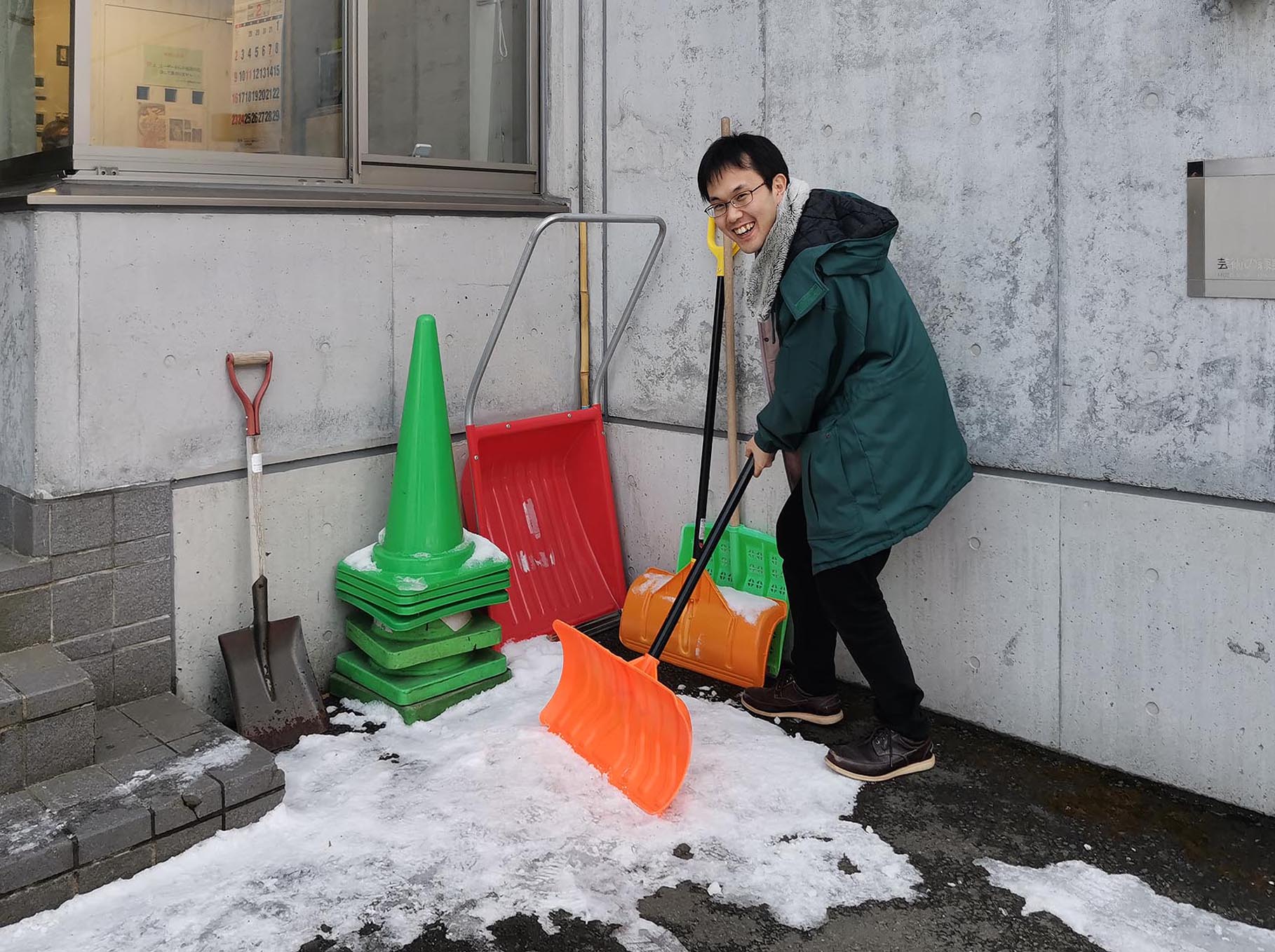
Thanks
We greatly thank the curatorial and organisational team of SIAF2020 for their dedication, helpfulness and hospitality. Special thanks to Agnieszka Kubicka-Dzieduszycka, Kumiko Noguchi, Asami Hosokawa, Chika Matsumoto, Takayuki Ota and Kohei Sato for taking care of us and finding all that we needed. We also really enjoyed staying and working at the Tenjinyama Art Studio, where the friendly staff and co‑residents made us feel at home. Many thanks also to the City of Sapporo for the amazing possibility to get to know Sapporo and to work on the installation.
Additional resources
- Photo album including many more pictures
License: CC BY 3.0 / Credits: Niklas Roy & Kati Hyyppä - Arduino code of the installation
- Video on archive.org